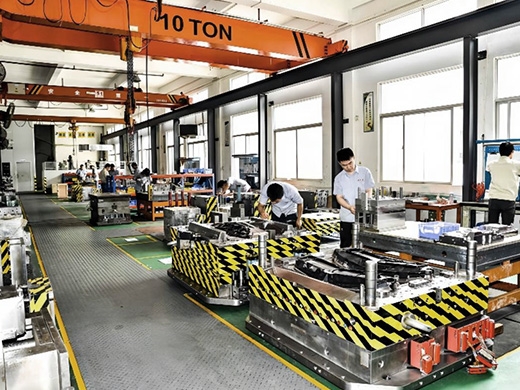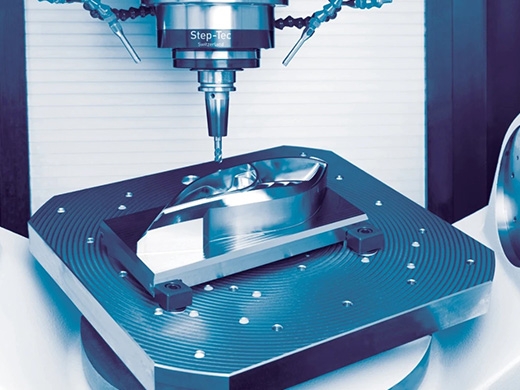Blog
We regularly update articles related to the prototyping and manufacturing industry. You’re welcome to check our previous blogs and subscribe to our newsletter.
The Keys to Successful Production: What is mold design and manufacturing?
The Foundation of Efficient Production Processes: What is mold design and manufacturing?
In manufacturing, mold design and manufacturing play a crucial role in ensuring efficient production processes. The procedures of mould design and manufacture are essential to industrial production. They are essential in producing various things, from simple consumer goods to intricate industrial components. The design and production of moulds are the subject of this blog article, which explores their importance, the procedures involved, and their effects on different industries.
The Importance of Mold Manufacturing and Design
To shape and form materials into desired products using procedures like injection moulding, casting, and others, mould design and manufacture are required. These moulds are the building blocks for mass manufacturing, allowing businesses to make accurate and consistent goods in large quantities. This importance is seen in various sectors, including aircraft, consumer products, automobiles, electronics, and medical devices. We will explore what is mold design and manufacturing and their significance in this article.
Making a Mould: A Step-by-Step Guide
From original concept to final manufacturing, these procedures guarantee that businesses can provide consumers worldwide with high-quality goods. Mould design is always changing due to technological advancements, allowing manufacturers to push the envelope and produce ever-more complicated and cutting-edge goods.

- Product Analysis:
The manufacturing process starts with comprehensively examining the intended product. Engineers consider the product’s size, materials, and intended application to choose the best mould design.
- Material Selection:
The mold’s material selection is essential. To ensure the seamless discharge of the finished product, it must endure the mechanical and thermal demands of the production process.
- Mold Design:
Engineers create the mould structure in the mould design process. They consider elements, including cooling channels, gating systems, and parting lines. Parting lines are the areas where the mould splits in half, allowing the completed product to be removed.
- Computer-Aided Design (CAD):
Modern mould design mainly relies on computer-aided design (CAD) software, which enables engineers to produce complex 3D models of mould components. Before actual production, this digital representation helps with visualization and analysis.
- Prototyping:
Engineering prototypes are frequently made before full-scale manufacture to check the operation of the mould and find any potential problems.
- Simulation:
Simulation software is required to predict how the mould will function during the production process. This aids in anticipating difficulties, such as uneven cooling, that can cause flaws.
Manufacturing the Mold: Bringing Precision to Production
The manufacturing process takes centre stage when the mould design has been painstakingly created and approved. During this crucial stage, the digital blueprint is converted into a tangible instrument that moulds and creates the items we use daily. Let’s explore the complex procedures needed to make a mould and the technology that supports accuracy and productivity.
Creating the Foundation with Tools
The initial stage of making a mould is tooling. The actual moulds must be made from raw materials like metal, plastic, or composites. During this phase, accuracy is crucial since any deviations might result in flaws in the finished items. Correctly carving the mould components using computer-controlled equipment known as computer numerical control (CNC) machining is frequently employed. Another method used for precise features is electrical discharge machining (EDM), which employs controlled sparks to dissolve the material and produce complicated structures. These cutting-edge methods guarantee that the mould components meet the design’s specifications.
Precision in Every Component During Assembly
The whole mould construction is methodically combined once each component has been created. This entails positioning and securing the cooling channels, ejector pins, and gating systems in addition to the core and cavity inserts, which are the portions that give the product its true shape. The assembly procedure needs precision to guarantee appropriate performance and smooth operation during the production processn. Each component must fit exactly and tightly to prevent any irregularities in the finished products.

Finishing the Surface: Ensuring a Smooth Product Release
The process of surface polishing is crucial in the creation of moulds. To guarantee a smooth discharge of the finished product and avoid flaws, the surfaces that come into touch with the molten material must be treated. Methods including polishing, texturing, and coating are used to attain the necessary surface qualities. In contrast to texturing, which provides patterns or textures to the mould surface that are duplicated on the finished product, polishing produces a mirror-like quality that helps with product release. Coatings can increase the mold’s toughness and resistance to damage, extending its lifespan and guaranteeing constant manufacturing quality.
Inspection with precision for quality control
The mould is placed through stringent quality control procedures before production. Critical dimensions are measured using precise inspection instruments like coordinate measuring machines (CMM) and optical measurement systems to ensure they comply with design requirements. Before using the mould for mass production, any differences or inconsistencies are found and corrected. The mould will manufacture goods with precision and consistency thanks to this rigorous quality control stage.
Iterative Testing: Improving the Process
Testing and iteration are essential steps that must be completed even after the mould is made and passes quality control. The mould is used to create a small batch of sample products so that its performance may be evaluated. These items undergo a rigorous inspection to look for flaws, dimensional errors, or other problems. Adjustments are made to the mould design or production process if any issues are found. This iterative process guarantees that the mould performs at its peak level, generating goods that adhere to the highest requirements.
Conclusion:
What is mold design and manufacturing? It is described in the above information. Precision engineering, cutting-edge technology, and exquisite handiwork combine to manufacture a mould. Mould making is a crucial component of contemporary industrial production thanks to its meticulous attention to detail, innovative manufacturing methods, and commitment to excellence. Through this complex process, the manufacturing industry continues to develop while creating the goods that impact our daily lives. Due to the tight quality control system that LOUIS MACHINE has built, the items’ quality can be tracked and has withstood the test of time. Our quality and technology will satisfy all of your demands. Our corporate philosophy’s core concept of integrity was something we upheld. Many consumers, in both local and foreign markets, have come to trust us. We are dedicated to providing mechanical items to clients at fair prices.





